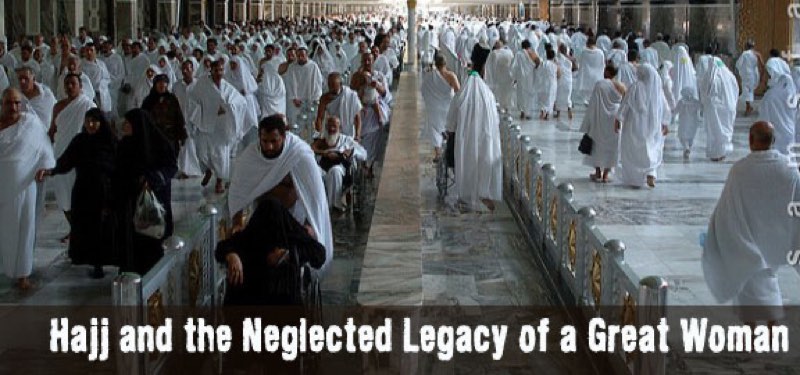The Fulfillment of Prophecy: The Jewish Rabbi's Admiration for Islam's Sacrificial Legacy
Religious traditions frequently assert their divine fulfillment, searching for validation of their legitimacy and divine favor within their scriptures. A notably significant moment in Islamic history illustrates this dynamic—when a Jewish rabbi came to Caliph ʿUmar ibn al-Khaṭṭāb with a remarkable confession: “If a verse like this had been revealed to us Jews, we would have declared the day of its revelation a festival day.” The verse in question is from Surah al-Mā’idah (5:3):
“This day I have perfected for you your religion, completed My favor upon you, and have chosen for you Islam as your religion.”
This Quranic declaration came during the Prophet Muhammad’s final pilgrimage (Ḥajj), marking the formal completion of Islam as a revealed religion. But why would a Jewish rabbi regard this verse with such admiration—perhaps even envy? To understand this, we must explore a prophetic verse from the Hebrew Bible, found in Isaiah 60:7, and analyze how Islamic rituals, particularly the Ḥajj, embody the prophetic vision better than the expectations of either Judaism or Christianity.
Isaiah 60:7 – A Sacrificial Vision Involving Arabs
The Hebrew verse in Isaiah reads:
“All the flocks of Kedar shall be gathered unto thee, the rams of Nebaioth shall minister unto thee: they shall come up with acceptance on Mine altar, and I will glorify the house of My glory.”
(Isaiah 60:7)
This verse envisions a time when the descendants of Kedar and Nebaioth, two sons of Ishmael (Genesis 25:13), will offer sacrifices acceptable to God. The mention of “Mine altar” and “house of My glory” is generally understood by Jewish commentators to refer to the Temple in Jerusalem, where animal sacrifices were once offered according to the Torah.
Yet, the destruction of the Second Temple in 70 CE left a void in Jewish religious life. Without the altar, the sacrificial system central to the Mosaic covenant could no longer be practiced. Jews have since longed for the rebuilding of the Third Temple, expecting the resumption of sacrificial rites in fulfillment of such prophetic verses.
But here lies the tension: the sacrificial act involving the Ishmaelite tribes—Arabs from the lineage of Kedar and Nebaioth—has not been realized in Judaism. Instead, it is in Islam’s Ḥajj rituals, especially the ʿEid al-Aḍḥā sacrifice, that this prophecy seems to find a living expression.
Islam’s Living Sacrifice: A Fulfillment of Isaiah?
During the annual pilgrimage in Mecca, Muslims from all over the world—many of them literal descendants of Ishmael—participate in animal sacrifices in remembrance of Abraham’s willingness to sacrifice his son (identified in Islam as Ishmael, not Isaac). These animals are offered near the Kaʿbah, the sanctuary Muslims believe was originally built by Abraham and Ishmael.
The connection becomes theologically provocative:
Kedar and Nebaioth: Represent Ishmaelite tribes, settled in the Arabian Peninsula.
Offerings accepted on the altar: The animals offered during Ḥajj are intended as acts of devotion to God, distributed to the poor in a ritual of divine acceptance.
“House of My glory”: In Islamic interpretation, this refers not to the destroyed Temple in Jerusalem, but to the Kaʿbah in Mecca—revived and purified by Prophet Muhammad, a descendant of Ishmael.
This paradigm effectively transfers the axis of prophetic fulfillment from Jerusalem to Mecca, and from Temple Judaism to Islam. The Jewish rabbi, recognizing this shift, would understandably feel a mix of reverence and regret—hence his comment to ʿUmar.
Christianity and the Sacrifice: Atonement Without Altars
Christianity diverges sharply in interpreting sacrificial themes. For most Christians, Jesus’ crucifixion is understood as the once-for-all sacrifice that atones for sin, rendering animal offerings obsolete:
“We have been made holy through the sacrifice of the body of Jesus Christ once for all.”
(Hebrews 10:10)
Thus, Isaiah 60:7, with its focus on physical offerings and ritual sacrifice, is often spiritualized or placed in an eschatological future. Some Christian theologians believe it refers to Arab conversion to Christianity in the end times, where the imagery of Kedar and Nebaioth signifies a gentile embrace of the Gospel.
Yet, the explicit association with animal sacrifice, a practice explicitly abandoned in Christian theology, remains problematic for this interpretation. Islam, by contrast, continues the sacrificial rites within a monotheistic framework that maintains Abrahamic purity and the legacy of Ishmael.
The Quranic Rebuttal: Abraham Was Neither Jew Nor Christian
The Qur’an addresses this theological contention directly in Surah Āl ʿImrān (3:67):
“Abraham was neither a Jew nor a Christian, but he was a monotheist, submitting to God (a Muslim), and he was not of the polytheists.”
Islam positions itself not as a new religion but as the restoration of the pure monotheism of Abraham, inclusive of the sacrificial rites and covenantal practices once diluted or abandoned by later traditions.
Conclusion: A Verse to Be Envied
The statement of the Jewish rabbi to ʿUmar ibn al-Khaṭṭāb reflects a profound religious realization: Islam had fulfilled a prophecy that Jews were still awaiting. The verse in Surah 5:3, revealed during the Prophet’s final pilgrimage, proclaims the completion of divine religion and favor:
“This day I have perfected for you your religion, completed My favor upon you, and have chosen for you Islam as your religion.”
This stands in sharp contrast to Judaism’s waiting for the Third Temple and Christianity’s departure from sacrificial rites. Islam emerges as the living continuation of Abrahamic worship—including the role of Ishmael’s descendants—thus embodying both the form and spirit of prophetic visions such as Isaiah 60:7.
In the end, it is not merely doctrinal differences, but the embodiment of prophecy in historical and living religious practice, that made that verse in the Qur’an the object of such profound rabbinic envy.

